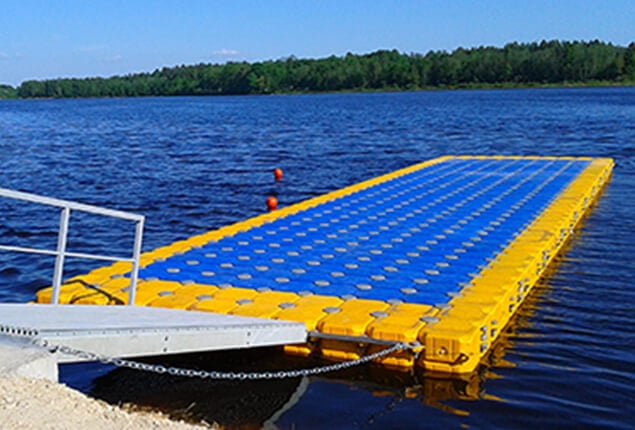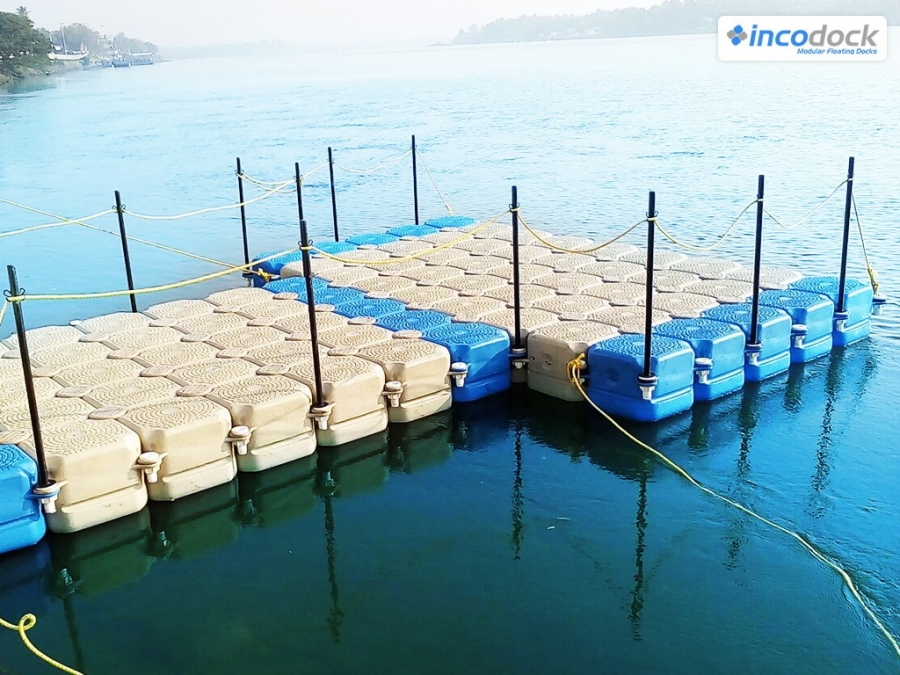Develop the Perfect Docking Service With Floating Docks
Floating docks existing a flexible remedy for a selection of maritime requirements, adapting effortlessly to rising and fall water levels and varied vessel types. Their modular nature enables fast installation and moving, yet the selection of suitable materials and layout attributes is crucial for guaranteeing both functionality and aesthetic appeal. As we check out the crucial elements that contribute to the performance of floating docks, several vital variables regarding stability and maintenance will certainly emerge, elevating questions concerning just how to enhance your docking experience. The succeeding discussion will illuminate these crucial factors to consider.

Advantages of Floating Docks
Floating docks deal many benefits that make them a suitable selection for various maritime applications. One of the primary benefits is their adaptability to altering water degrees. Unlike fixed docks, floating docks fluctuate with the tide, guaranteeing consistent ease of access for vessels. This feature is particularly crucial in locations prone to significant tidal changes or seasonal water degree adjustments.
Additionally, floating docks are generally simpler and quicker to set up compared to typical set structures. Their modular style enables straightforward setting up and disassembly, facilitating upkeep and moving when essential. This flexibility is specifically helpful for temporary applications or in atmospheres where conditions may change.
Floating docks also often tend to be much more eco-friendly, as they lessen interruption to the seabed and bordering aquatic communities. Their buoyant nature decreases the threat of damage to marine life, advertising a much healthier setting. Additionally, these docks can be tailored to accommodate different vessel sizes, ensuring that they satisfy certain operational needs - floating dock builder.
Eventually, the mix of flexibility, convenience of setup, and environmental considerations makes floating docks a very reliable service for a large range of maritime requirements.
Choosing the Right Materials
Selecting the suitable materials for floating docks is critical to ensure durability, stability, and sturdiness. The selection of materials directly affects the dock's efficiency in numerous ecological conditions, consisting of direct exposure to water, sunlight, and possible wear from marine traffic.
Usual products used for floating docks include aluminum, wood, and high-density polyethylene (HDPE) Light weight aluminum is light-weight, corrosion-resistant, and needs very little upkeep, making it an exceptional choice for durability. Its first price can be greater compared to other products.
Timber, while visually attractive and giving a traditional look, can be susceptible to rot and bug damages otherwise properly dealt with. Using pressure-treated wood or naturally resilient varieties like cedar or redwood can mitigate these issues.
HDPE is a prominent option due to its resistance to UV rays and chemicals, together with being eco-friendly. floating dock builder. It is lightweight and offered in numerous shades, permitting customization
Eventually, the appropriate product selection will rely on details demands, consisting of budget plan, desired looks, and ecological considerations. Mindful evaluation of these factors will bring about a effective and durable floating dock remedy.
Design Factors To Consider for Stability
When creating floating docks, making sure stability is an essential element that can substantially impact their performance and security. Security in floating dock style is affected by numerous aspects, including buoyancy, weight circulation, and the setup of parts. An optimum buoyancy system should utilize products that give enough lift while lessening weight. This balance makes certain that the dock continues to be above water, even under varying lots.
Weight distribution is critical; uniformly distributing loads throughout the dock stops turning and boosts stability. This informative post can be attained with critical positioning of docking equipment, such as fenders and cleats, in addition to correct spacing of floats. Additionally, the dimensions of the dock must be attentively prepared. Wider styles can provide boosted security, especially in rough water problems, while longer docks might need added supports to stop sagging.
One more vital factor to consider is the environmental impact, consisting of wave activity and wind. Integrating features such as sidewalls or skirting can help minimize the effects of ecological pressures, keeping stability in adverse problems. Eventually, a mix of thoughtful layout, material option, and understanding of environmental elements will produce a drifting dock that fulfills both stability and safety requirements.
Setup Tips and Methods

Following, safeguard the needed authorizations and stick to local guidelines, which may dictate installation methods and environmental considerations. Involve a certified contractor experienced in floating dock installations if required. Usage top notch products created for marine atmospheres to boost resilience and longevity.
When placing the dock, straighten it alongside the shoreline to assist in easy accessibility. Make certain that the anchoring system is robust, using cinder block or helical supports to stabilize the dock versus wind and wave action. It's vital to make up seasonal water degree variations, including prospective ice movement in chillier climates.
Throughout the setup, confirm the dock's floatation and security prior to completing the anchoring. On a regular basis check the installment for any type of indications of wear or damage. By following these techniques discover here and ideas, you can achieve a protected, functional, and aesthetically pleasing floating dock setup that meets your needs.
Maintenance and Care Standards
Maintaining and caring for floating docks is essential to prolonging their life-span and making sure secure usage. Routine evaluations should be carried out to identify any signs of wear, damage, or aquatic growth. Search for splits, loosened fittings, or discolored areas on the dock's surface, as these problems can endanger architectural integrity.
Cleaning up is crucial. Utilize a pressure washing machine to eliminate algae, barnacles, and debris, which can accumulate over time. For stubborn growth, think about ecologically pleasant cleaner that will not harm aquatic life.
Additionally, examine the mooring lines and supports frequently to ensure they are complimentary and safe and secure from deterioration. Replace any frayed or damaged lines quickly check my site to keep security.
Throughout severe weather, such as tornados or freezing conditions, take preventive procedures. Safeguard the dock with additional mooring lines and, if viable, eliminate any type of removable parts to avoid damages.
Final Thought
Finally, the execution of floating docks presents a reliable and flexible docking service appropriate for various maritime applications. Their versatility to varying water levels, incorporated with a modular style, permits simple customization and moving. Picking appropriate products improves both sturdiness and visual allure, while cautious factor to consider of stability ensures safety and longevity. With appropriate installation and normal upkeep, floating docks can give effective and trusted docking experiences for a broad array of vessels.
As we check out the important elements that add to the effectiveness of floating docks, numerous vital aspects concerning security and upkeep will arise, raising inquiries about just how to enhance your docking experience. Unlike repaired docks, floating docks increase and fall with the tide, ensuring regular accessibility for vessels.When developing floating docks, making sure stability is a basic facet that can dramatically affect their capability and security. Security in floating dock style is influenced by various aspects, including buoyancy, weight distribution, and the arrangement of parts. Eventually, a combination of thoughtful layout, product choice, and understanding of environmental variables will certainly yield a floating dock that fulfills both stability and security needs.